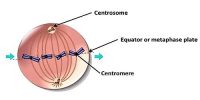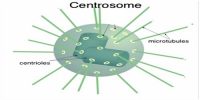Those who have life are living beings. Microorganisms, Plants and Animals have life, so they all are living beings. Living world is composed of microorganisms plants and animals. One or more cells make every living being. The cell is the structural and functional unit of the living body. All sorts of reaction and anti-reaction in the living body are cell-centred. So to know about any living beings one should know about the living cell at first. All living cells are not alike. As they are, different in structure, they are different in size, shape and functions.
Different types of cell are described below in brief. All the cells of Plants and Animals are eukaryotic but they have differences as well. Difference between the Plant cell and Animal cell are shown in a tabular form at the end of this chapter. However, the main difference between them is the Plant cells have a non-living cell wall, which is absent in the Animal cell.

Animal Cell
- Cell wall absent. Cellulose in ally form is also absent.
- Cytoplasm is denser, more granular and occupies most of the space in the cell.
- Vacuoles absent. If present, they are small, temporary and concerned with excretion or secretion.
- Plastids are absent.
- The centrosome is present with one or two centrioles.
- Prominent and highly complex Golgi bodies present near the plastid.
- Reserve food stored in the form of glycogen.
Plant Cell
- Cellulose cell wall is present in plant cells.
- Cytoplasm is pushed to the periphery and forms a thin lining against the cell wall.
- Vacuoles are large and prominent. Maybe one or more.
- Plastids are generally present.
- The centrosome is absent but two small clear areas called polar caps are present. These participate in cell division.
- Several subunits of Golgi apparatus called dictyosomes present.
- Reserve food stored in the form of starch.














